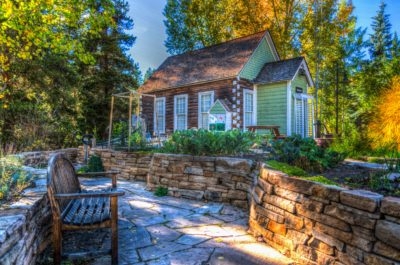We’re sitting in a coffee place west of Austin, enjoying the breakfast tacos. Our arrival boosts the average age substantially — only one of my breakfast buddies is under 70. Then I ask an innocent question.
“Are you living in the house you thought you’d be living in?”
Among the four present that day, no one was.
The funniest answer came with shrugged shoulders and rolled eyes. “We’re on our third Last House,” my fellow septuagenarian said.
New addresses in your future?
Only then did I realize my wife and I were about to start work on our fourth last house. This is not a rare, freakish condition. It is common. So ordinary, in fact, that it may qualify as a malady.
I call it Last-House-Syndrome, the errant notion that your life has finally settled down so thoroughly that you are certain this is the last time you’ll move. At least while living.
This illusion of certainty has consequences, particularly if you’re not poor and have choices. Can you spell u-p-g-r-a-d-e? After all, if it’s going to be your last (insert object here), why not make it the best, or at least the one you’ve never been able to afford before? It’s OK; you won’t be buying one again, right?
Last House Syndrome
This is how you find elderly couples who eat like birds — but with kitchens large enough to feed a small invasion, kitchen cabinets so tall they exceed the reach of professional basketball players and refrigerators so sensitive they can do psychotherapy. Not to mention master bathroom showers large enough to line dance while soaped and naked, even if it would be better not to for reasons we won’t go into here.
Skeptics are invited to visit any new subdivision in Texas that proudly announces new homes “from the $500s” referencing a pre add-ons price of only $500,000. Still better, try a visit just about anywhere in “God’s waiting room,” otherwise known as the state of Florida, and check out some of the super-sized condos currently on offer.
Anyone who thinks we don’t love our houses should consider this: Total household ownership of real estate, recently at $25 trillion, according to the Federal Reserve, was only about $20 trillion when it peaked before the financial crisis.
Another option
So here’s the question: If you’re really thinking about your Last House, what should you be thinking?
Answer (unless you have money to burn): Smaller, less expensive.
But that’s not what we, collectively, do. Reader mail tells me that most people try to hold the fort with the largest house they’ve ever owned. Alternatively, we push for a house that’s still larger. (Once retired, “We’ll need much more hobby space” is a good starting rationalization.)
The payoff for rational downsizing, however, can be amazing.
Here’s an example. Suppose you own a home with no mortgage and it’s worth about the national median of $325,000, according to the U.S. Bureau of the Census. Many older folks do. After sales expenses you net $300,000. Assume annual operating expenses of $15,000, or 5 percent of market value. (It can be lower in some states due to low property taxes, but 5 percent works pretty well in Texas.)
The down-sizing payoff
If you move to a home half as expensive, you’ll have a $150,000 home and about $150,000 in cash. That’s enough, at 5 percent, to support the new house for the rest of your life. In the process, you’ll have completely funded the largest single category of spending everyone has. Every dime of shelter expense you once used Social Security benefits and savings to cover will now be covered by newly liberated home equity.
What’s the net effect? The equivalent of $300,000 in savings has been made available for spending other than shelter. That “equivalent” is more than the vast majority of Americans have put aside for retirement. It’s also a significant chunk for all but the richest Americans.
Yet $300,000 is now less than the median home selling price.
Will a carefully considered downsizing/downpricing be this rewarding for everyone?
Not likely.
But if you sit down and pencil out what a carefully exercised “Last House” change could do, you’ll probably be impressed.
Related columns:
Scott Burns, “Finding the Top of Up-Scale,” 7/08/18 https://scottburns.com/finding-the-top-of-up-scale/
Sources and References:
FRED: Median home sale price index: https://fred.stlouisfed.org/series/MSPUS
This information is distributed for education purposes, and it is not to be construed as an offer, solicitation, recommendation, or endorsement of any particular security, product, or service.
Photo: Pexabay.com on Pexels
(c) Scott Burns, 2018
